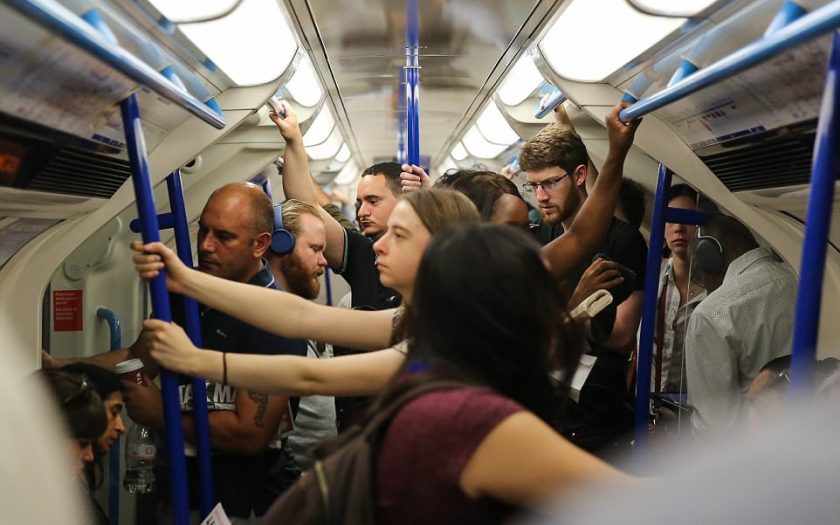From Daniel Williams of Visualise Training and Consultancy
daniel@visualisetrainingandconsultancy.co.uk
Daniel Williams takes a look at the challenges people with disabilities encounter when choosing to travel by rail and offers some potential solutions to make it more accessible to everyone.

Daniel Williams
Sorry, you need to book 24 hours in advance
“Here we are in the 21st Century, but how far have we come as regards accessible rail travel? If you’re a person living with a disability, it’s frustrating that you just cannot turn up at the station, get on a train and travel wherever you want to go to the same as everyone else because you need to book assistance at least 24 hours in advance. It’s both inconvenient and embarrassing when you arrive at the station and staff seem all flustered due to a lack of training when it comes to the needs of people with disabilities and how to assist them in the best way.”
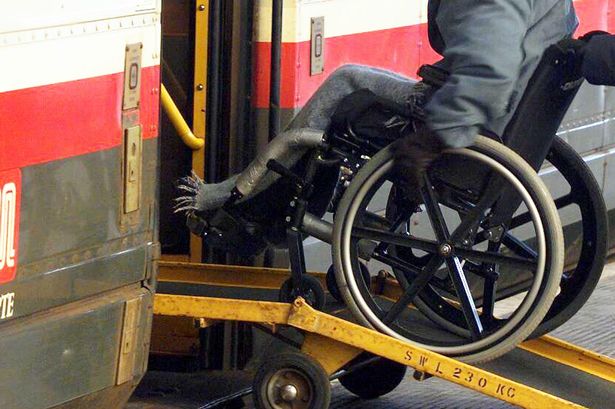
“Boarding the train with assistance is fine, the ramps are deployed and on you go; however the assistance ceases at the door and you are left to guide your own wheelchair to the designated priority seating area which is often an obstacle course involving negotiating narrow corridors and luggage and constantly apologising for asking people to move out of your way.”
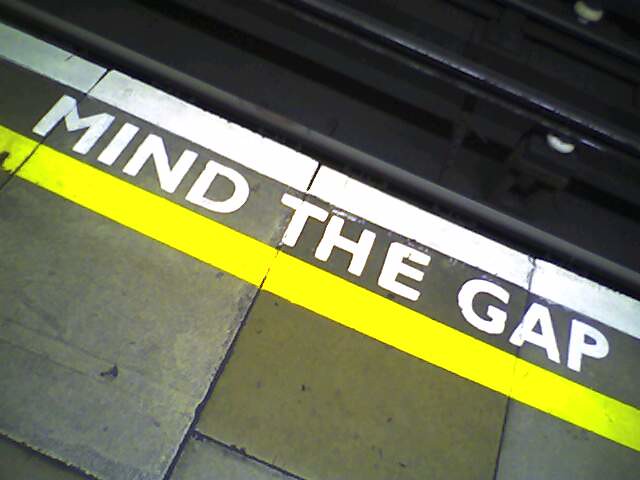
” A helpful solution that would reduce awkwardness all round would be for the guard to complete service duties by assisting the person in a wheelchair to the priority accessible seating area, then asking the people sat in them if they require them”.
Priority seating

“If you’re able to walk, you approach the priority seats with trepidation as nine times out of ten, someone is sat in them. Maybe they require the priority seats, or maybe they just did not realise they were sat in seats allocated for people with disabilities? The signage is not always clear – small signs with wheelchair images do not portray the vast array of people living with disabilities – and that results in people ignoring others who need to use them. Priority seats (depending on what train you’re on) are naturally attractive to all passengers as they have plug sockets, are right next to the toilet and come with plenty of leg room.”
Hidden Disabilities
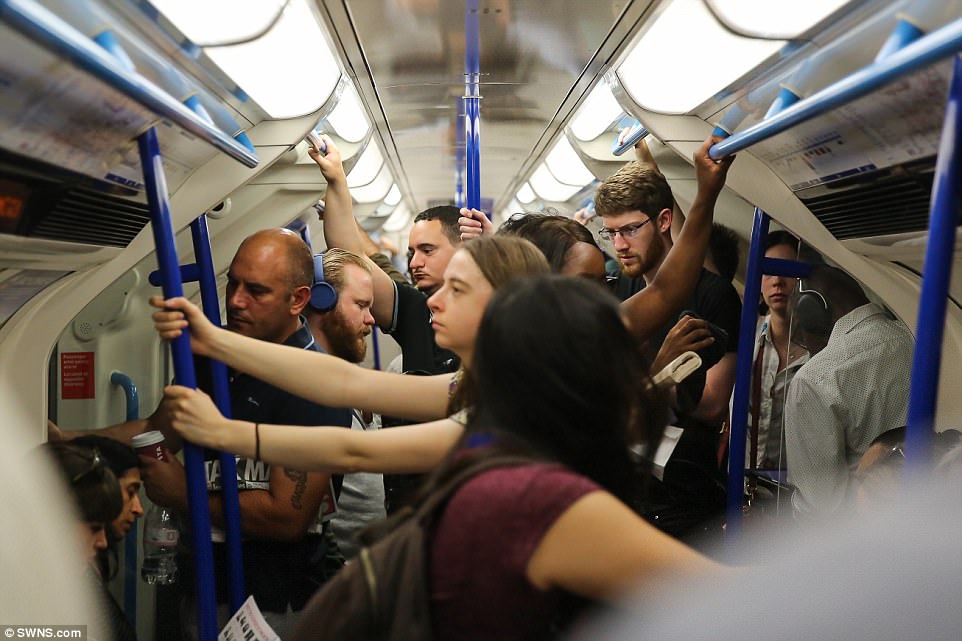
“The next dilemma is whether they actually require these seats. There are lots of people who have hidden disabilities such as sight impairment or severe anxiety who may also require priority seating”

“Some people will completely ignore you by pretending you’re not there, others can become quite hostile and mutter to themselves before reluctantly getting up but occasionally you will meet the really nice passengers who will offer their seats without hesitation and smile to cheer up your day. On any one particular day you may have a problem and seek out the guard to ask if they would intervene, but they are sometimes reluctant to ask a passenger to move, so surely there must be a solution to this problem.”
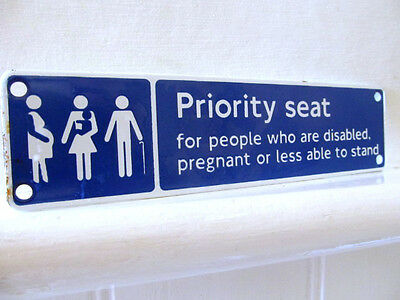
“It would be far more helpful to highlight the priority seat fabric with a high colour contrast which differs from the rest of the seating. This would not only enable passengers to easily identify priority seating, but also help those with a visual impairment to locate them more easily. Rather than using the small signs depicting only a wheelchair, why not make a larger A4 sign with images of several disabilities?”

Let the train take the strain – right?
“If you are lucky to obtain a priority seat and it’s time to settle down and get comfortable, you’re in for a bit of a shock, especially if you have secured a pull down seat! It’s like sitting on a plank of wood – no padding for the derriere and certainly not designed for comfort or good posture. If you didn’t have back problems before sitting down, I can assure you after a two-hour train journey you’re going to get up with one. Who on earth designed these seats as accessible priority seating.”

“If you are very lucky and have secured a comfortable seat with a table, you may wish to work on your laptop – yes, people with disabilities do actually work! The table is so far away, so despite the comfortable seat, you have to lean so far forward it not only makes it difficult to work, it results in back problems once again so designers need to consult with passengers with disabilities before drawing up their ideas!”
First Class challenges
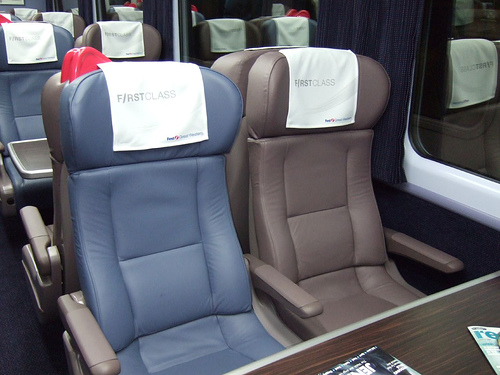
“Provisions in First Class for wheelchair users are hit and miss too: in some trains there are none and in others your wheelchair is positioned facing the back of the seat. Should you have company the only way to have a conversation is for them to turn round to talk to you in between the seats so not a lot of thought has gone into that provision!
However they do at least have a buffet service, which leaps onto the next thought; what happens when you are hungry or thirsty? If you want to work at a table and you’re in a wheelchair, forget it as there seem to be no accessible tables available at these seats. When the train has buffet only provisions and no trolley service, assessing it is virtually impossible as it’s so far away!”
Paws for thought
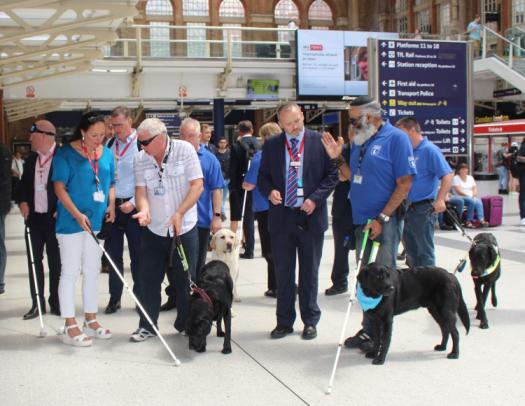
“And finally, the poor assistance dogs – where on earth are they expected to go. Generally, they lie in the aisle and are stepped over or worse stepped on, kicked or pulled about to make way for people to get on or off the train. Desperately trying to squeeze into the smallest space giving them no room to move after a hard day at work is hardly demonstrating that we’re a nation of dog lovers!”
FOR MORE INFORMATION
CLICK HERE if you need any help when travelling by train
CLICK HERE to find out more about making your organisation accessible and inclusive
CLICK HERE for visual impairment awareness training
daniel@visualisetrainingandconsultancy.co.uk

